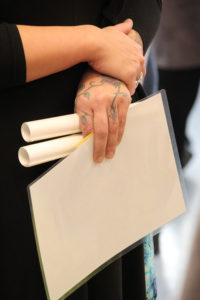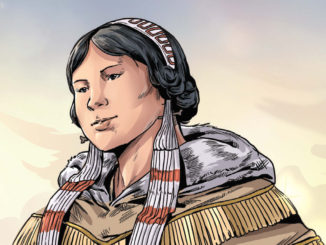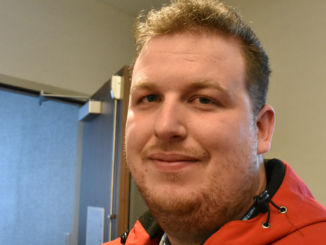Exercise offers an interactive, emotional look at the troubling relationship between Canada’s indigenous people and European settlers.
Jonny Hodder
Kicker
Quiet sobbing can already be heard as Marcella Williams, standing barefoot on a bright fleece blanket, slowly unrolls a white paper scroll and begins reading the words typed on it.
By the time she’s done reading, she’s fighting back her own tears as well.
“This wasn’t in my plan,” she said after the session had ended. “It was heavy.”

Williams was one of about 20 group members who participated in The Blanket Exercise recently as part of Memorial University’s Aboriginal Peoples Week.
The exercise is an interactive group workshop that teaches people about reconciliation using the experience of indigenous and non-indigenous Canadians, from pre-contact and colonisation to residential schools and land rights issues.
“I knew it was going to be heavy because I knew the topics that were going to be discussed,” said Williams.
Session organizer Edward Allen has facilitated the workshop numerous times in his career as a counsellor in Vancouver and more recently as the aboriginal cultural education coordinator with Memorial University in St. John’s. He understands that talking about these issues can be difficult for participants due to the disturbing history it highlights.
“This exercise is uncomfortable, but very tame given the gravity and the history.”
“If you find yourself feeling uneasy, it’s because you’re human and these are sensitive things,” Allen said.
As the session started, Allen and his co-coordinator Katelin King laid out a dozen colourful fleece blankets in a large square on the floor to represent Canada. Participants representing indigenous groups were handed a white scroll, a laminated picture, a coloured index card and were asked to stand on the blankets in the centre of the room.

Over the next hour, Allen and King narrated a history of Canada that is often excluded from public schools, including early land treaties, the residential school system and missing and murdered aboriginal women. Allen, playing the role of a European settler, walked through the group as he spoke, separating blankets, rearranging participants and asking them to read their scrolls.
Williams, a Mi’kmaq language teacher and artist, was randomly given a scroll discussing the children affected by the residential school system.
By the time the workshop ended, the blankets were separated and the participants were standing isolated from one another on their fleece reserves. It’s a powerful visual contrast, but as Allen puts it, the workshop only touches the surface of the story.
“This exercise is uncomfortable, but very tame given the gravity and the history,” Allen said.



